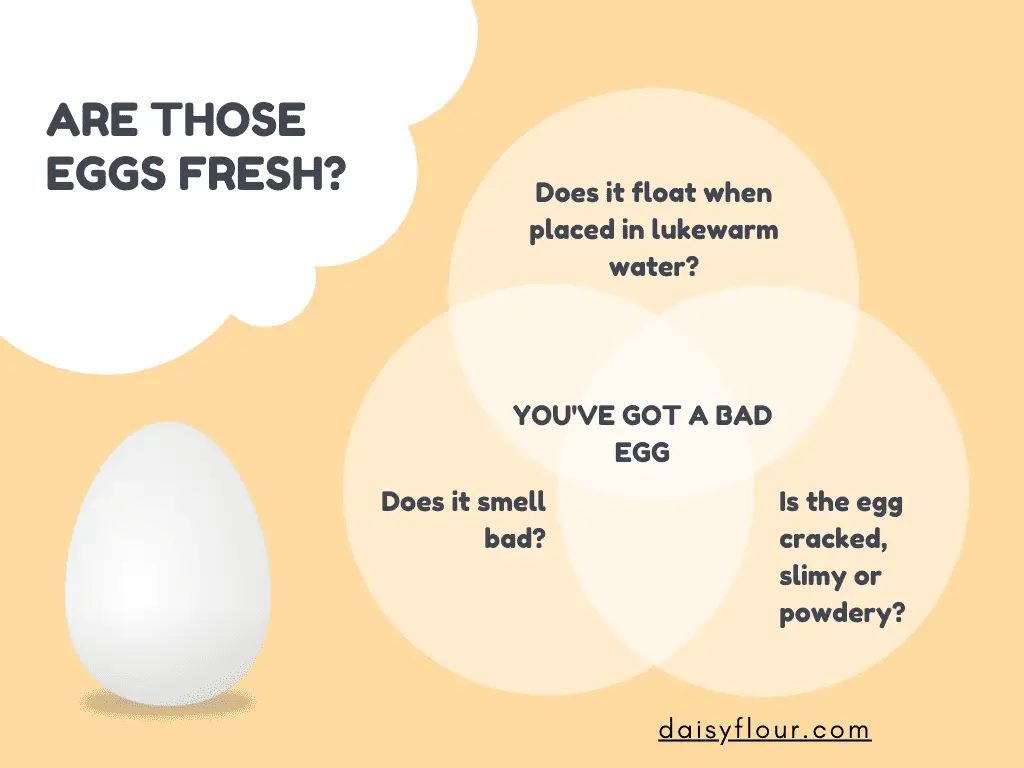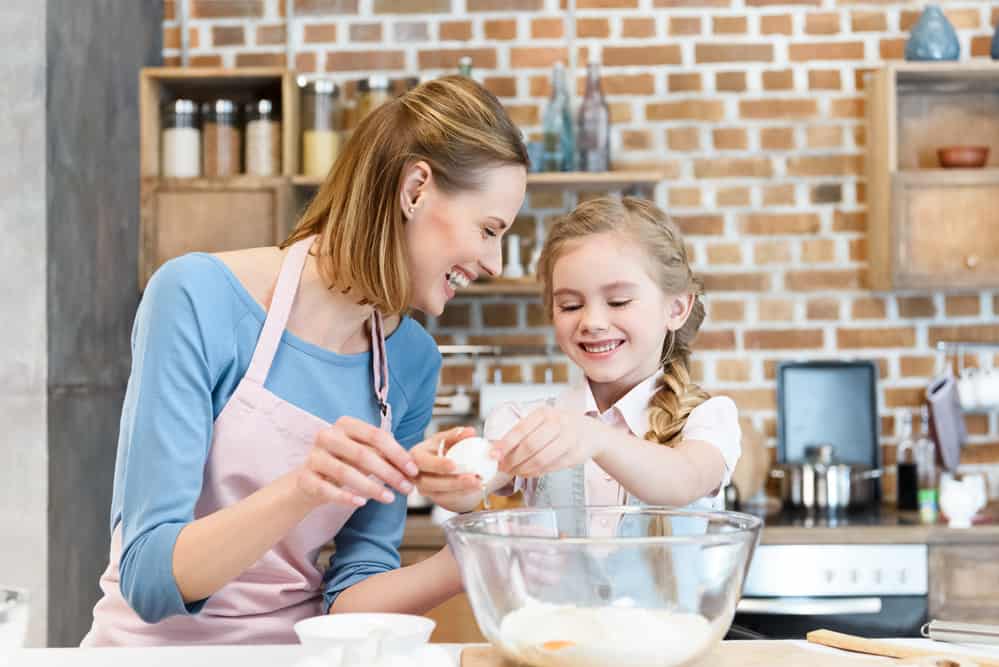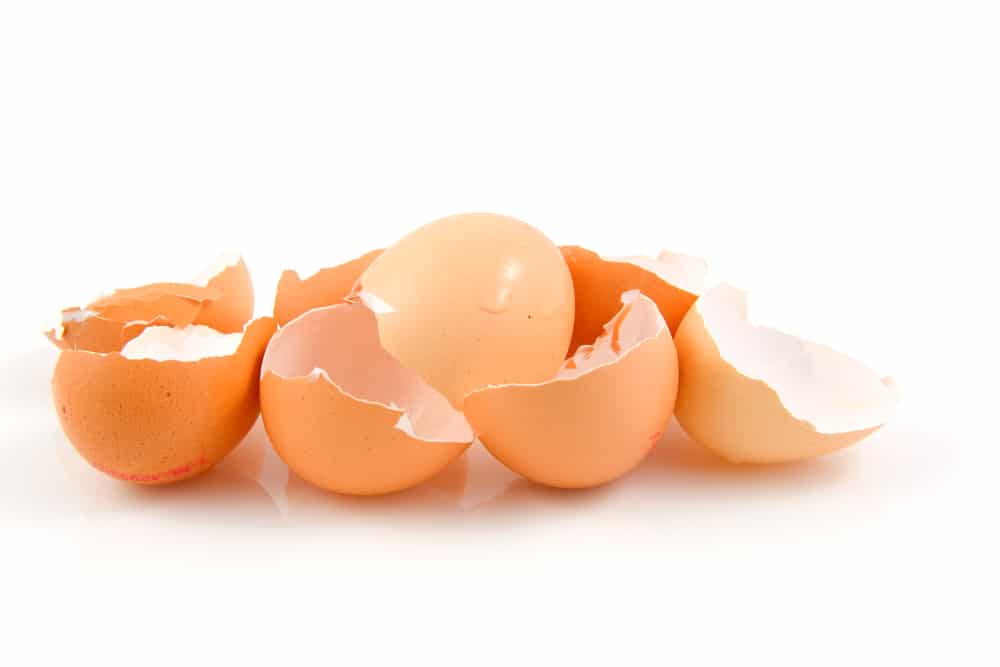When creating any baking dish, whether through a recipe or completely from scratch, there’s one ingredient, in particular, that tends to show up the most often: eggs. From cakes and brownies to the elusive pavlova, eggs are an integral part of the baking process.
Eggs are present in recipes at the most basic level all the way to more expert baking dishes. They’re a leavening agent, they provide structure, and they add richness, color, and flavor to any dish they’re in. For vegans and those with an egg allergy, there are other substitutes available.
In this article, we’re going to explain exactly what an egg’s purpose is, how it’s used in the baking process, and good alternatives to use when eggs aren’t an option for you.
What is the Purpose of Eggs in Baking?
Eggs are basically a multitool in the world of baking. They have several different functions depending on the dish you’re working on and without them, it’s highly unlikely your dish will turn out correctly. Eggs are important for leavening, flavoring, and providing structure, color, and richness in your dish.
Beyond the actual composition of the dish, eggs can also be used to make an egg wash. Egg wash is a mixture of egg and another liquid that is used to brush on the surface of a dish. Using an egg wash will add color and texture to the top of your bread or other dessert and make it look more polished. Egg wash is also commonly used in frying foods to help the crumbed exterior adhere to the food it’s coated in.
How to Know an Egg is Fresh

Although we can all agree that fresh is best, eggs actually have the capability to last weeks longer than you’d think. If you prefer using fresh eggs in your baking, there are a few things you can do to ensure they’re fresh before adding them into your recipe:

- Check the expiration date. If you’re using storebought eggs, look for the expiration date listed on the carton. If you’re still within the expiration date of your eggs, you can be sure they’re still fresh.
- Use your sense of smell. If eggs have gone bad, they’re going to have a distinct rotting egg smell. You can also crack the eggs you need in a bowl and conduct the sniff test that way.
- Use your sense of sight. Eggs with a shell that is cracked, slimy, or powdery, is likely going to be unusable. Feeling sliminess or seeing cracks may mean there is bacterial growth in the egg. If you crack the egg and see the yolk is runny, this is also a sign that the egg is past its usability date.
- Do the float test. Gently set the egg in a bowl of lukewarm water. If the egg sinks, it’s still fresh. However, a floating egg can indicate that too much air has separated the insides of the egg and it’s no longer usable.
Egg Safety in Baking
According to the Food and Drug Administration (FDA), fresh eggs have the potential to contain harmful bacteria called Salmonella. Even if your eggs have no noticeable cracks, this bacteria can still make its way inside of the egg.
To ensure your safety when preparing and eating eggs or something with egg in it, there are some guidelines you should follow:
- Only purchase eggs from the refrigerated section of the grocery store. Unless you’re receiving farm-fresh eggs from a friend, you can’t really tell where your eggs are coming from. However, store-bought eggs have certain standards they need to meet before making it on the shelf.
- Store your eggs in a refrigerator after you get home from the store. Commercial eggs are washed before they make it to the grocery store and no longer have the layer of bloom to protect them from bacteria.
- Use your eggs within three weeks of purchase. This will ensure you consume them at the best quality.
- Eat within the “best by” date. Hard-boiled eggs should be consumed within a week of cooking, frozen eggs should be eaten within a year, and leftover egg dishes should be consumed within 3-4 days.
Raw Eggs
It’s strongly recommended to cook eggs thoroughly before consuming them to avoid getting food poisoning from salmonella. When eating eggs alone, you can usually tell if they’re still raw if the texture is slimy.
In the baking world, there are some things that require the use of raw eggs. For example, traditional royal icing recipes call for the use of raw egg whites. While the risk for catching a foodborne illness is small, it’s still possible and there are now more alternative recipes to create a good royal icing.
Some people may suggest that lemon juice can kill salmonella in raw eggs and actually fry the egg with its acidity levels. However, it’s generally frowned upon to use this as a method for killing salmonella. In fact, one expert says lemon juice may not affect the raw egg if salmonella is already present.
Using Eggs in Your Baking

Now that you understand the importance of egg or an egg substitute in a dish, it’s time to learn how to actually incorporate this ingredient into your creation. From bringing eggs to room temperature to properly whisking the egg, we’ve got you covered.
Bringing Eggs to Room Temperature
Although it isn’t necessarily a dealbreaker if you use cold eggs, room-temperature eggs will bring you one step closer to perfecting your dish. Room temperature eggs work in the same way using other room temperature ingredients does. When you use room temperature eggs, they cream together far easier than if you used eggs that were too cold.
When you add cold eggs to room temperature wet ingredients, the end result can look curdled as a result of the cold eggs stiffening up your other ingredients. So how exactly does one bring an egg to room temperature?
Depending on the type of egg you’re using, store-bought or farm-fresh, the amount of time it takes to reach room temperature can vary. With farm fresh eggs, you can actually store them in egg holders on your countertop because the bloom hasn’t been washed away and protects the insides from bacteria.
However, store-bought eggs have been commercially washed and require refrigeration. Bringing them to room temperature can take up to two hours but there is a trick you can do to drastically cut your waiting time down. To quickly bring refrigerated eggs to room temperature, follow these steps:
- Fill a small bowl with warm water. Make sure the water isn’t too hot as this can actually cook the egg instead.
- Add your eggs into the bowl. The warming process should take roughly five minutes and you’re good to go.
For separated eggs, follow these steps instead:
- Separate the egg. The egg white should go in one bowl and the yolk in another.
- Place each small bowl into a larger bowl. The larger bowl should have a few inches of warm water.
- Let the egg bowls warm in the water. The water mustn’t be too hot as it can cook the egg parts. Your separated egg should be lukewarm within about five minutes.
Removing Eggshells From the Egg

To crack an egg, gently hit the midsection of the egg with the side of a separate bowl. When you notice a good-sized crack, gently pull both sides apart and allow the egg to fall into the bowl. This seems easy enough, but there are plenty of instances where you may accidentally get some eggshells in your egg.
To make removing eggshells from an egg easier, it’s best to crack them in a bowl that is separate from the rest of your ingredients. Once you’re confident that there aren’t any shells in your egg, you can add it in with the rest of your mixture.
Using a spoon is generally the easiest way to remove the shell as you can scoop it up and then use your hands if necessary.
Separating Egg White From Egg Yolk
Many recipes call for certain parts of the egg while leaving the others out. When this happens, you don’t have to worry about suddenly needing to become a professional. Separating an egg yolk from the egg white is actually much easier than one would think. To properly separate your eggs, follow these steps:
- Set two bowls in front of you. One bowl will hold your egg white while the other will hold the yolk.
- Gently crack your egg. This should be done on a flat surface, like a counter, or on the rim of one of the bowls you’re using.
- Pry each half apart. Do this gently to maintain control of the egg.
- Transfer the egg back and forth between both shells. You should be working over the bowl you’re using for your egg whites.
If you prefer to get a little messier, you can also do this step with your hands. Be careful, though, because eggs are notoriously slippery and it’s easy to lose your control when using only your hands.
Whisking an Egg White

In recipes like pavlova, whisking your egg white is perhaps the most important step. Whisking is the process of adding air to your eggs whites to make them lighter. In order to get the pillowy peaks you’re looking for, it’s important to follow the steps for whisking an egg white properly. To correctly whisk egg whites, follow these steps:
- Separate your eggs. Follow the steps for separating eggs that we mentioned above. Also, make sure no yolk snuck its way into your egg whites as it can make your mixture too heavy.
- Add salt or cream of tartar. These will help you achieve the peaks you need for your recipe. Before adding either of these ingredients, make sure you use a whisk to whip your eggs enough to form a bit of foam.
- Whip the eggs until you reach the needed peak. This step is pretty rigorous and requires a lot of manpower. You’ll want to continuously keep mixing until peaks form.
How to Beat Egg Whites Without a Mixer
There’s no doubt that a stand mixer can certainly make your job easier when it comes to whisking and beating egg whites and other ingredients. However, there are some instances where that just isn’t possible.
To beat egg whites by hand, simply use a correctly sized whisk for the bowl you’re using and rigorously beat the eggs until the texture and consistency are what they need to be.
Egg Alternatives
Although most people outgrow it, egg allergies are incredibly common. To add to that, the veganism movement has begun gaining more and more traction in recent years. Because of that, the hunt for good egg substitutes in baking and cooking has become a necessity. Luckily, there are a variety of alternatives one can use when baking a recipe that requires eggs:
- Applesauce: unsweetened applesauce is the preferred ingredient as it doesn’t add a load of extra sugar to your dish.
- Mashed banana
- Ground flax or chia seeds: mix these with water to get the right consistency.
- Commercial egg substitute
- Silken tofu
- Vinegar and baking soda mixture
- Yogurt or buttermilk
- Arrowroot powder
- Aquafaba
- Nut butter
- Carbonated water
- Agar-Agar or gelatin
- Soy lecithin
Although all of these ingredients are great egg substitutes, some work better than others for different purposes. For example, aquafaba is the ideal replacement for egg whites while soy lecithin is more suited for replacing egg yolks.
Baked Goods and Eggs

We know that most baked goods require eggs in some form, but that differs between recipes and goods. Let’s take a closer look at how some of the most popular baked goods use eggs in their recipes:
- Donuts: The fat in eggs works with butter in a donut recipe to create a rich donut.
- Pizza Dough: In pizza dough, the egg is what gives your dough the golden color after cooking. Egg also provides protein and fat in the dough.
- Fondant: Raw egg whites are used in fondant and when you want to give it a shiny exterior, you can also use your egg for an egg wash.
- Brownies: Egg is an emulsifier for brownies. Simply speaking, the eggs are what help hold all of the ingredients together to make the brownie.
What Happens With an Eggless Cake?
While a cake can still survive without the use of eggs, their absence can lead your cake to be too flat. When baking a cake with eggs, the egg is what helps your recipe rise while cooking. When you don’t have that ingredient to aid in the process, the good can’t perform that specific duty.
Instead of forgoing eggs altogether, you can use any of the substitutes we listed above.
How to Make Eggless Cinnamon Rolls

Cinnamon rolls are, unquestionably, one of the best comfort sweets to ever exist. Although traditional cinnamon roll recipes require the use of eggs, there are really yummy egg-free recipes available, like this one.
To make eggless cinnamon rolls, you’ll need the following ingredients:
- All-purpose flour
- Milk
- Baking powder and baking soda
- Salt
- Sugar
- Lemon juice
- Butter and oil
- Cinnamon
- Yeast
First, mix your milk and lemon juice and set it to the side. This will turn into buttermilk for you to use later. Next, you’ll need to add your new buttermilk, sugar, and yeast together. Sift together your dry ingredients in a separate bowl.
After that, you’ll mix your butter and oil into your dry ingredients. Gradually add in your other wet ingredient mixture while simultaneously stirring your dry ingredient bowl. Knead the dough until it is smooth and no longer sticky.
Then, you’ll cover your dough and let it prove for about two hours before shaping it into your cinnamon rolls. While your dough is proving, mix together the sugar, cinnamon, and butter before spreading it on your proven dough. Roll the dough into a tight log and then use string or dental floss to cut even rolls.
Place your individual rolls into a pan and cover before letting it rise again for around 45 minutes. After the dough has risen again, bake for 15-18 minutes and then enjoy.
Baking With Egg FAQs
How many eggs come in a box?
Most egg cartons will come with one dozen eggs. However, there are smaller and bigger containers that can hold anywhere from 3-24 at once.
How many eggs come in a baker’s dozen?
“A baker’s dozen” refers to 13 eggs instead of 12.
Can I use the entire egg instead of just the egg white?
Recipes that call for the use of egg whites do so because they need light ingredients. Using the entire egg will weigh down your recipe and make it difficult to achieve what you need.
Why does my cake taste like an egg?
When eggs are cooked, they release their signature sulfuric smell. This is completely normal and can be masked with extra frosting when your cake is complete.
Can you make a box cake without eggs?
You can use any egg substitute, like applesauce or bananas, to successfully bake a box cake mix.
What is a great option for an eggy dish?
We love a good crepe cake. Check out our article, and you’ll understand why!
